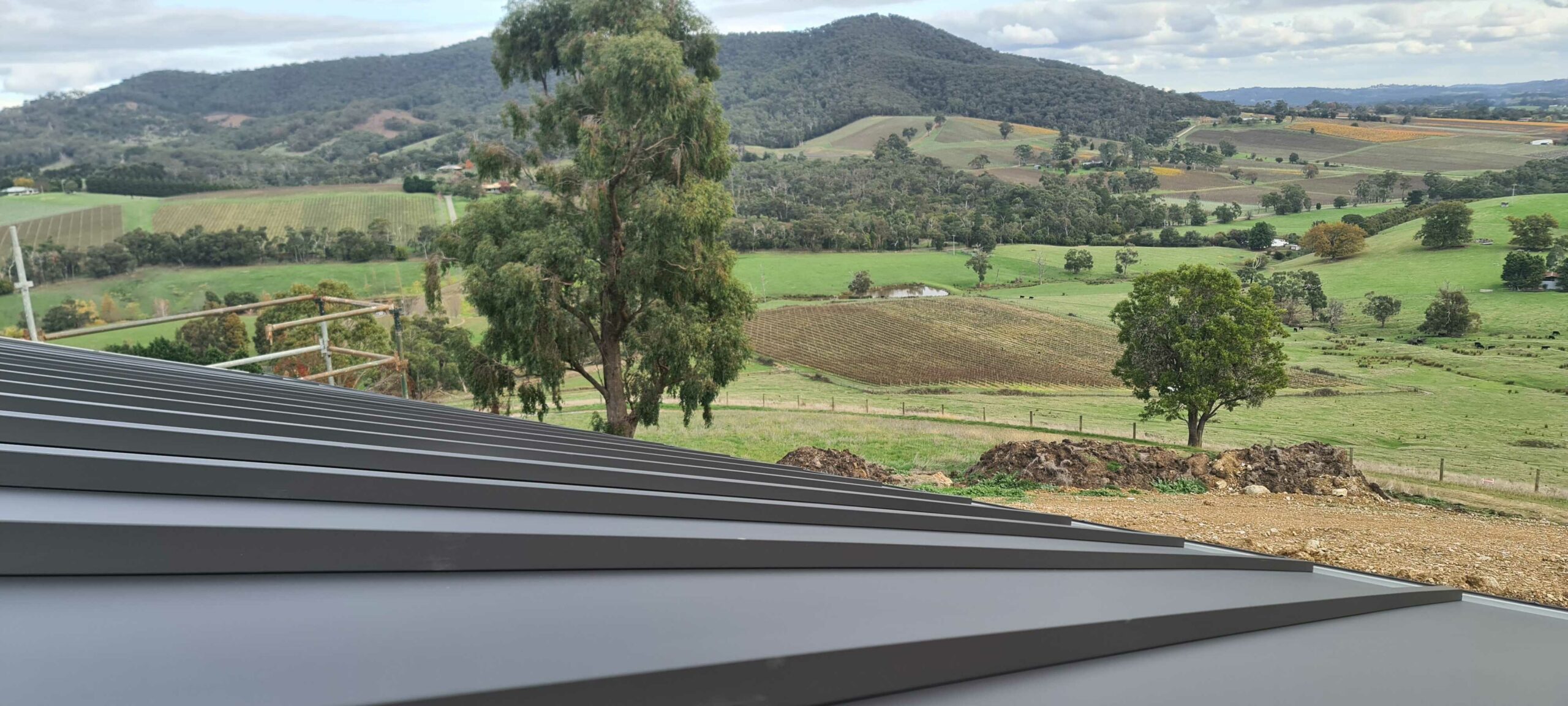
Batten Seam Cladding
Characteristics
Providing a very traditional look. This system has a very long history. Each tray is formed with two upstands against a timber batten. These timber battens are then capped off to ensure a waterproof finish. The battens provide a stark and bold finish.
Applications
While originally a roofing system only, it can be used on vertical walls as well. The battens are nominal 40mm in height and approximately 60mm wide.
System Buildup
-
- The Batten seam system requires a fully supported build up for both walls and roof applications.It is advised that this plywood sub-construction is installed over battens that allow for a ventilated system. Some material manufacturers make this a requirement to qualify for the material warranty offered.
For wall applications it is recommended that a minimum 15mm thick layer of structural plywood is being used.
For all roof applications a minimum 17mm thick layer of structural plywood is required.
This plywood is then covered with a breathable / waterproof membrane such as ProctorWrap RW (walls) and ProctorWrap HTR (roofs). In some instances the use of a self-adhesive waterproof membrane is recommended such as the ProctorWrap SA.
Depending on the material being used, it is recommended to use a physical separation layer between the metal panels and the sub-construction. We can advise on individual requirements
- The Batten seam system requires a fully supported build up for both walls and roof applications.It is advised that this plywood sub-construction is installed over battens that allow for a ventilated system. Some material manufacturers make this a requirement to qualify for the material warranty offered.
For wall applications it is recommended that a minimum 15mm thick layer of structural plywood is being used.
For all roof applications a minimum 17mm thick layer of structural plywood is required.
This plywood is then covered with a breathable / waterproof membrane such as ProctorWrap RW (walls) and ProctorWrap HTR (roofs). In some instances the use of a self-adhesive waterproof membrane is recommended such as the ProctorWrap SA.
Depending on the material being used, it is recommended to use a physical separation layer between the metal panels and the sub-construction. We can advise on individual requirements
Standard Sizes
-
-
- 1,200mm wide coils (Aluminium, Colorbond, some Copper)
- 300mm
- 330mm
- 500mm (not recommended as it shows a lot of oil canning)
- 1,000mm wide coils (VM Zinc, EL Zinc, Rheinzink, Copper)
- 233mm
- 400mm
- 670mm wide coils (VM Zinc, Rheinzink)
- 570mm -> This has been used on roofing applications predominantly. It is not widely used anymore these days as the materials can show excessive distortion in the panels.
While the above are the standard sizes meaning that there is no waste from the coil material, it is very common to customize the panel sizes to suit each project. The width and length of the panels can easily be changed to better fit the project at hand and allow design flexibility.
-
- 1,200mm wide coils (Aluminium, Colorbond, some Copper)
- 300mm
- 330mm
- 500mm (not recommended as it shows a lot of oil canning)
- 1,000mm wide coils (VM Zinc, EL Zinc, Rheinzink, Copper)
- 233mm
- 400mm
- 670mm wide coils (VM Zinc, Rheinzink)
- 570mm -> This has been used on roofing applications predominantly. It is not widely used anymore these days as the materials can show excessive distortion in the panels.
While the above are the standard sizes meaning that there is no waste from the coil material, it is very common to customize the panel sizes to suit each project. The width and length of the panels can easily be changed to better fit the project at hand and allow design flexibility.











